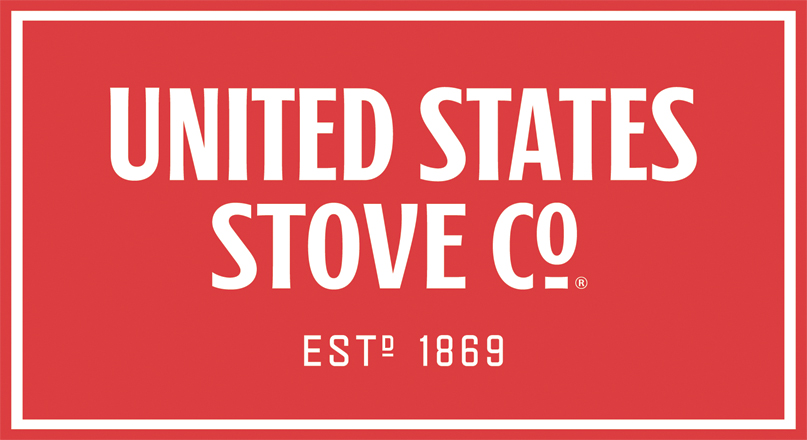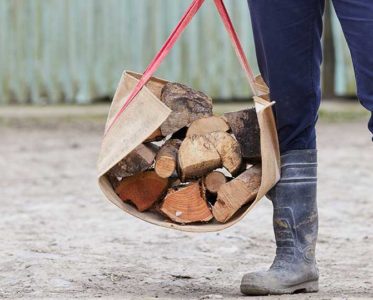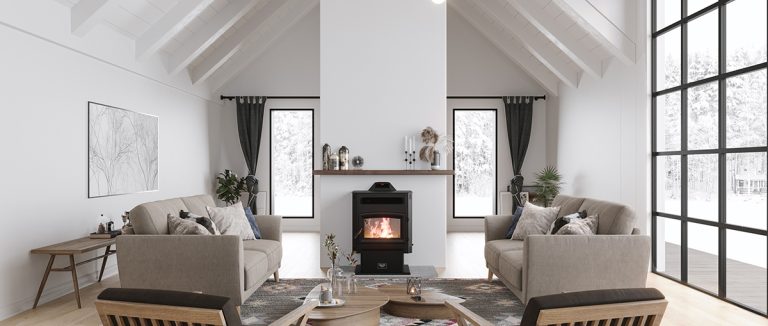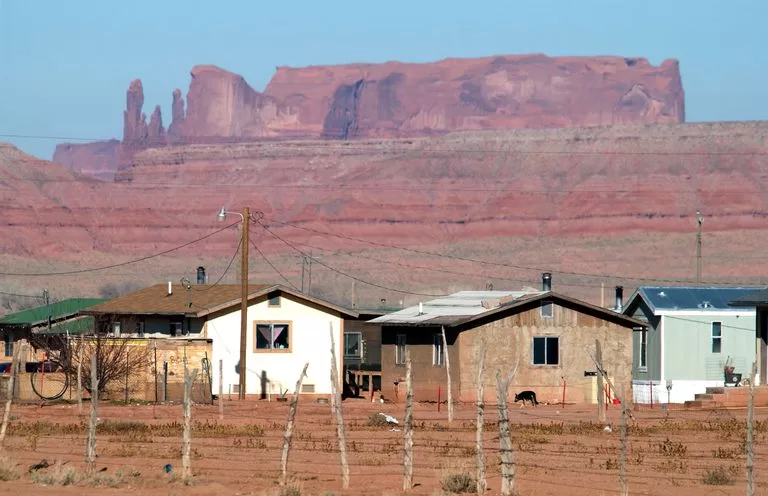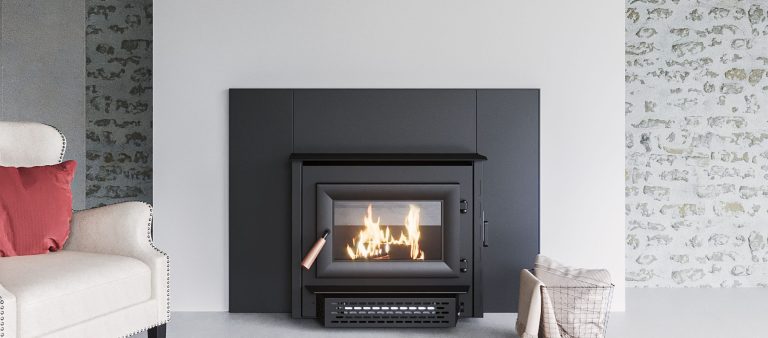In our over 150 years of providing heating appliances for North America, many customers have asked us what kind of heat is best for them and why. There is no standard answer for everyone as each of our customers live in different areas of the country and have different fuels available to them. Couple that with local restrictions and an extremely large variety of choices, the decision on what stove you need can become very daunting.
In a home with average insulation and 8 ft. ceilings it will take at minimum 6,000BTU output for every square foot heated. This is a general rule of thumb but can vary greatly based upon geographical location and local conditions. In the Northern regions, it will be closer to 10,000 BTU/200 sq. ft. whereas in the Southern regions it can be as little as 4,000 BTU/200 sq. ft. A BTU or British Thermal Unit is a unit of energy equal to the amount of heat required to raise the temperature of 1 pound of water to 1°F.
Now that you know the amount of heat needed, it is time to decide on the type of fuel. In North America, most consumers have the following available: Cordwood, Wood Pellets, Natural Gas, Propane, Home Heating Oil and Electricity.
Heating with Cordwood
Why Heat with Cordwood? Cordwood is the most economical heating fuel you can use and is a renewable energy source. By heating with wood, even the loss of electrical power does not interrupt the heating of your home. With energy costs increasing 35% or more, wood heat is the best cost saving solution to heating your home. A stove in your living area keeps the room where you spend most of your time warm, while bedrooms and basements stay cool. Customers with easy access to timber on their own land or in their local area can benefit most from wood.
Advantages
- Cheap. Average cost of $175-$350 per cord of hardwood that is split and seasoned. Even less if you own the land and timber and can harvest it yourself.
- 1-2 cords per season used.
- Initial install of the stove can be expensive, but the economical fuel costs will offset this investment shortly.
- Stove purchase pricing is among the least expensive of all heating sources.
Disadvantages
- Large space for wood fuel storage needed.
- Work may be needed to harvest the fuel.
- Can be messy due to wood scraps.
- Chimney installs may cost more than the stove.
Heating with Wood Pellets
Wood pellets are a refined and densified biomass fuel that is formed when wood residues are compressed into a uniform diameter under high pressure. Wood pellets have a uniform shape, size and density and are ideal for automatic combustion heating systems such as pellet stoves. By pelletizing wood residues from sustainably harvested biomass and quality waste wood, millions of tons of biomass can be put to work for the local economy while at the same time preserving the environment. Most of the residues are a Timber industry by-product in the form of sawdust that is compressed and extruded into the form of a pellet. A typical homeowner uses 3 tons of pellets per heating season at a cost of about $810. At an average retail price of $270/ton, pellets offer a fuel cost per million BTU of $20.25. To offer a fuel cost of $20.25 per million BTU,# 2 fuel oil and propane would have to be priced at $2.18/gal and $1.44/gal, respectively.
Advantages
- Efficient – Low moisture and ash with extremely high burn-thru efficiencies.
- Cost effective – Typically $270 per Ton with a typical home requiring 2-5 tons annually.
- Convenient – Sold in bags and bulk pallets of bags in most parts of North America.
- Environmentally responsible – Typically made with biomass waste from the Timber industry.
- Small storage area needed – Typically 1 or 2 pallets.
Heating with Gas
Gas heating is very popular. With the network of natural gas delivery in almost every town and city, it can be very easy to tap into. As North America develops better ways to extract natural gas from the earth, the abundance of this fuel will keep its prices relatively low. When natural gas pricing is low, it makes an excellent heating source. There are two main types of gas heaters. Each with their own sets of advantages and disadvantages.
Propane
Advantages
- Available most anywhere in the country
- Clean burning
Disadvantages
- Prices can fluctuate rapidly and wildly
- If you run out, a company must service your house
Natural Gas
Advantages
- Seemingly endless supply when attached to the network
- Clean burning
- Available in most parts of the country
Disadvantages
- Prices can fluctuate rapidly and wildly
- Many areas require monthly fee during off use months
Vent Free Heaters
Vent Free heaters are extremely popular because of their ease to install. It consists of basically hooking them to your gas supply and turning them on.
Advantages
- Available in both natural gas and propane
- Easy and instant control of your heat for comfort, safety and efficiency
- Up to 99% efficient
- Reliable – In most cases you can continue to heat without electricity
- Clean burning – no ashes to cleanup
- Easy installation
Disadvantages
- Gas smell
- Carbon monoxide is left in the room
- Open flame
Direct Vent Heaters
While not as popular as Vent Free heaters, Direct Vent heaters are gaining in popularity. Some areas of North America do not allow Vent Free heaters which will make Direct Vent heaters the only option in these cases. Direct Vent heaters are directly vented to the outside of the living space.
Advantages
- Available in both natural gas and propane
- No gas odor
- Carbon monoxide is expelled thru the venting
- Over 70% efficient in many cases
- Can be made to look like a real fireplace
Disadvantages
- Typically, 4x the cost of a vent free appliance
- Requires some sort of chimney or venting install
- Many areas require professional installation
Electric Heaters
Electric heaters are also very popular. They typically require little to no installation and are readily available everywhere. They can come in many forms from typical portable heaters to fancy wood fireplace that have the look of actual installs. They can easily be turned on and off. But electricity is typically the most expensive way to heat your home. They are very inefficient and lack the nostalgia of other types of heat.
Putting it All Together
Now that we know about the types of fuels available, how do we choose the correct stove for your situation? Use these points below to help you choose.
Wood Stoves
- Available in sizes ranging from 500 sq. ft. to 3,000 sq. ft.
- Range in prices from $500 to $4000 and higher
- Require a chimney to be installed
Wood Furnaces
- Designed for use in a whole house situation
- Can cover 1,800 sq. ft. to over 3,000 sq. ft.
- Designed to be installed in a basement and connected to existing or new ductwork
- Can be controlled with a thermostat
Pellet Stoves
- Available in 1,500 sq. ft. to 2,800 sq. ft sizes
- Require a small vent installed
- Fuel is easily stored and handled with little mess
- Extremely efficient and clean burning
Gas Stoves
- Require gas line installation
- Some may require venting
Electric Heaters
- Easily setup and ready for use
- Portable
- No additional venting needed
How do you choose the correct stove? Key questions to ask are:
- How much square footage are you trying to heat? This will determine the size of stove you are looking for.
- What fuel do you want to use? What fuels are readily available in your area? If you are looking to heat with a renewable source, Cordwood or Wood Pellets are your choice. If you have access to Cordwood, it will make a wood stove an easy choice, but if you don’t, then Wood Pellets are probably best for you. If you don’t want the mess and ash associated with biomass products, then Gas is your next choice for quality heating
- What style suits your home and lifestyle? This question hits to the design of your stove. If you have a very modern interior, then a classic design stove may look out of place. The opposite also applies if you have a very rustic look, then a sleek stainless-steel model may not work for you. Here it all comes down to personal design tastes.
Stay Warm,
US Stove Company
